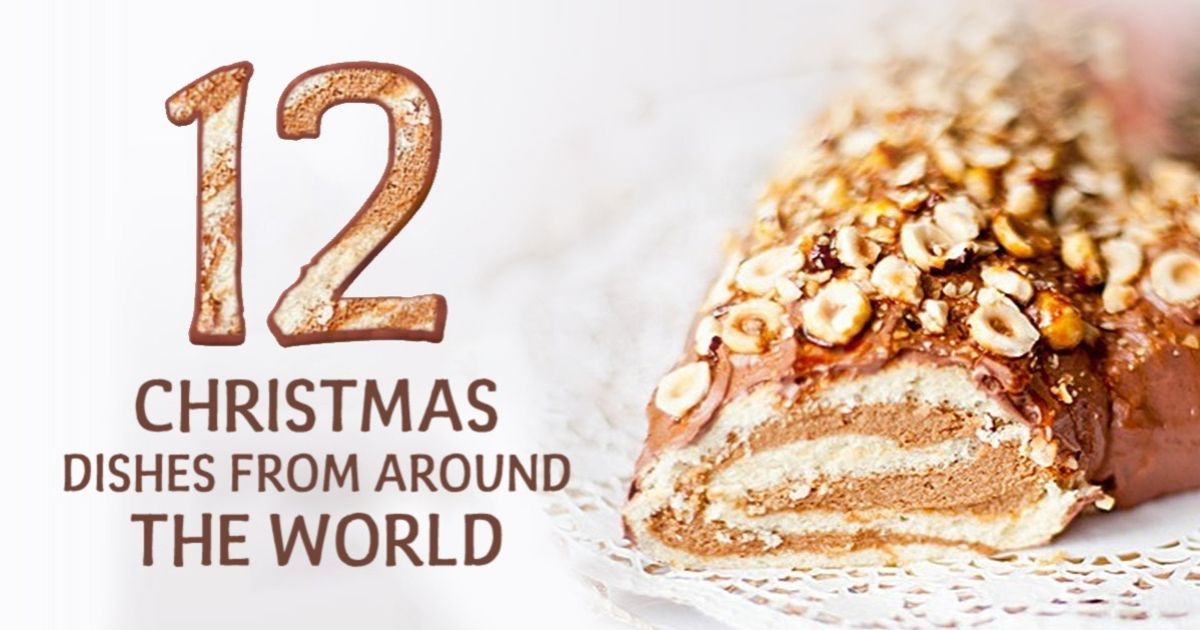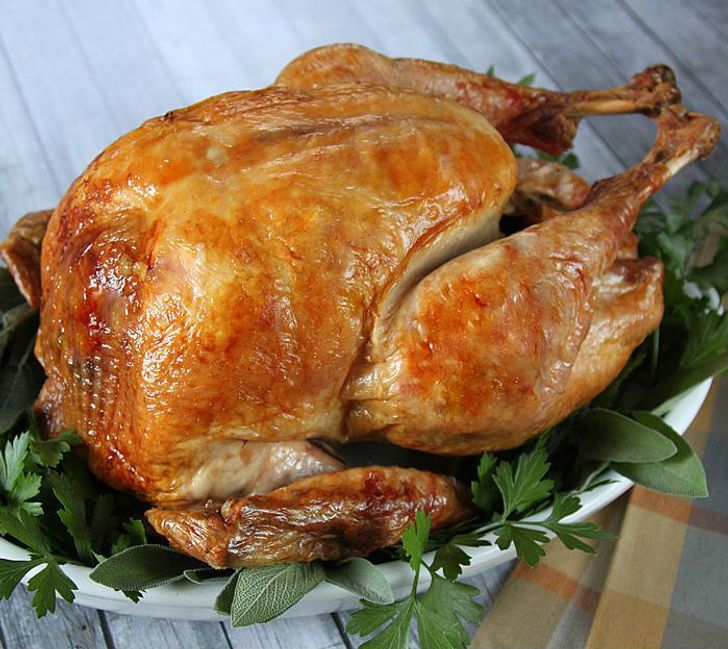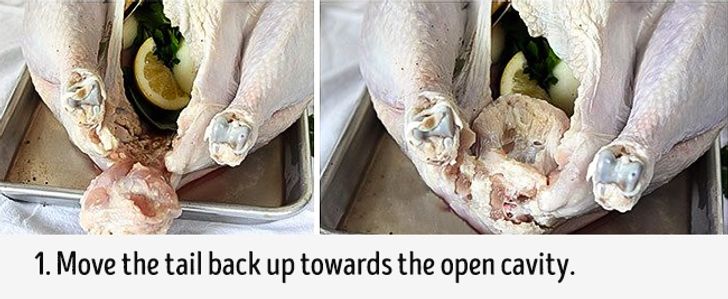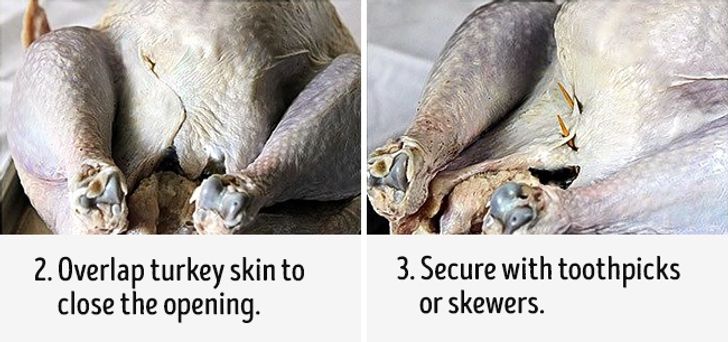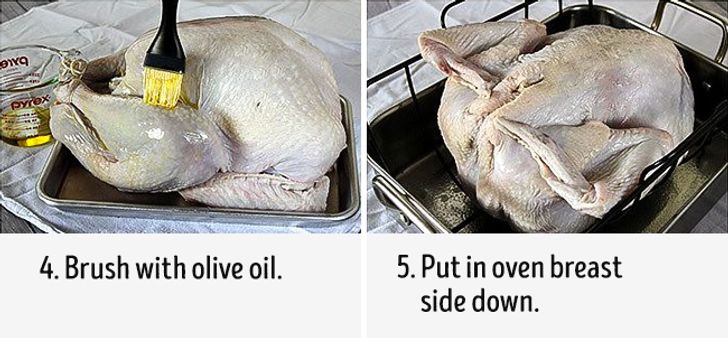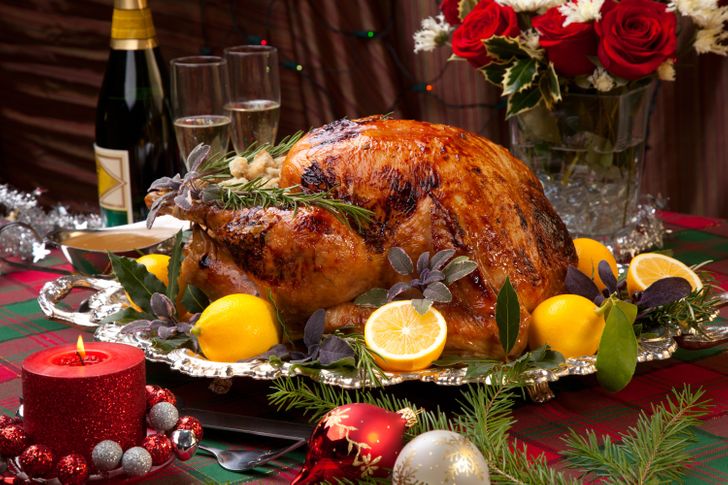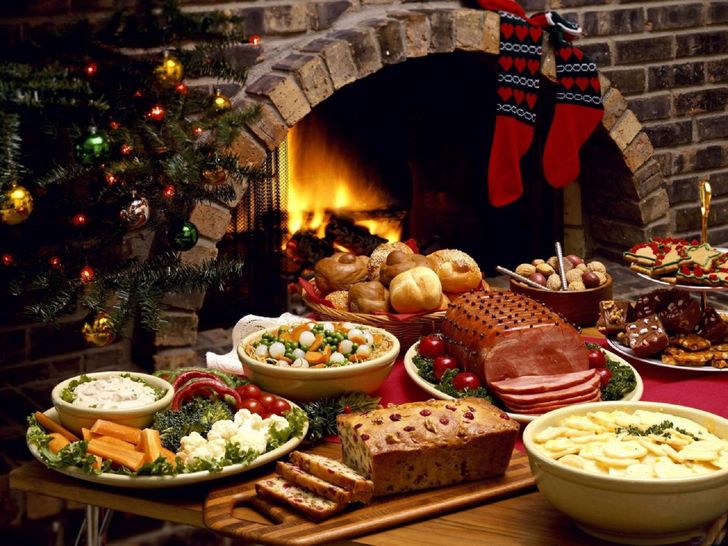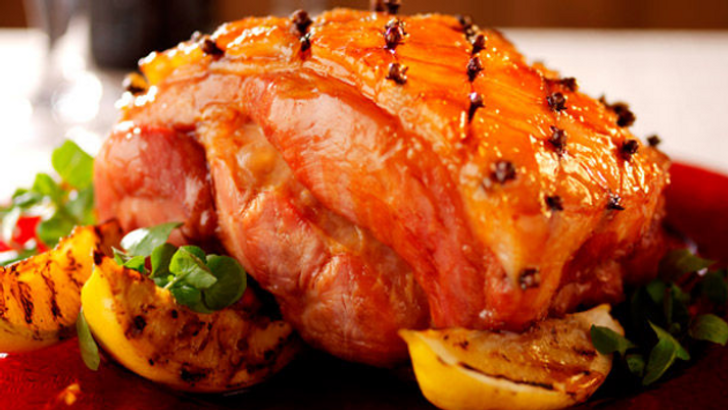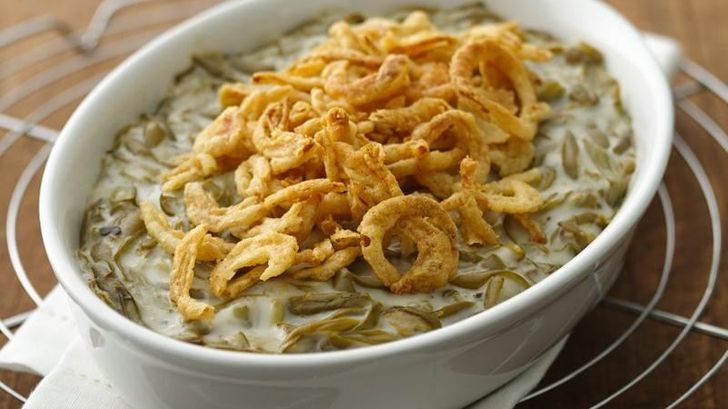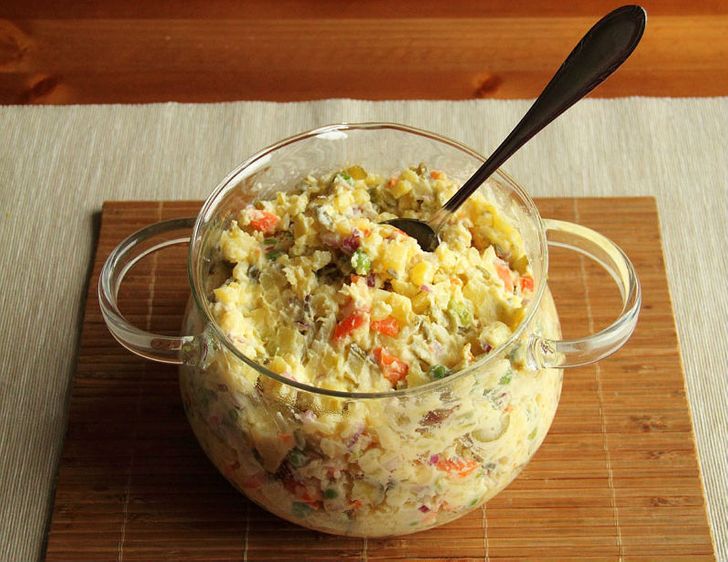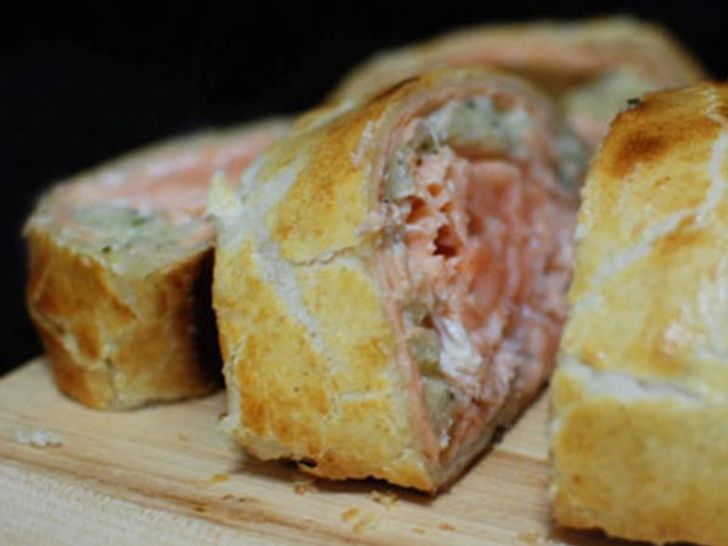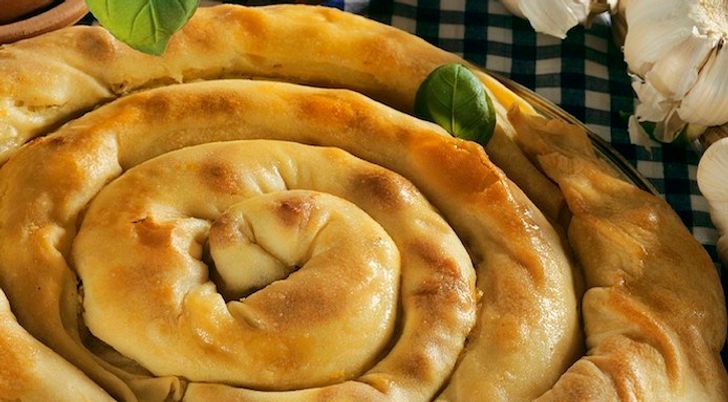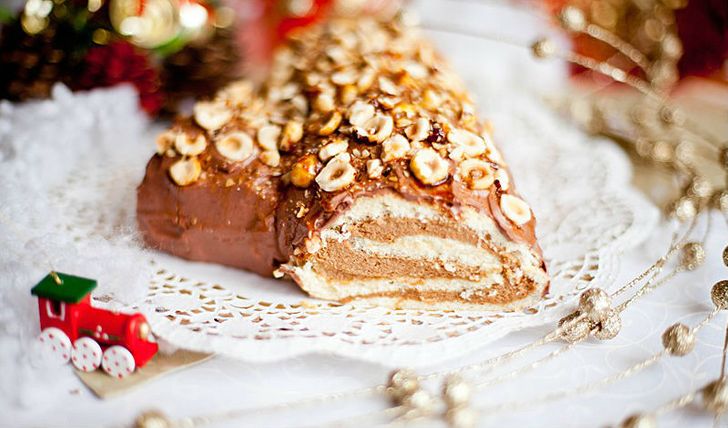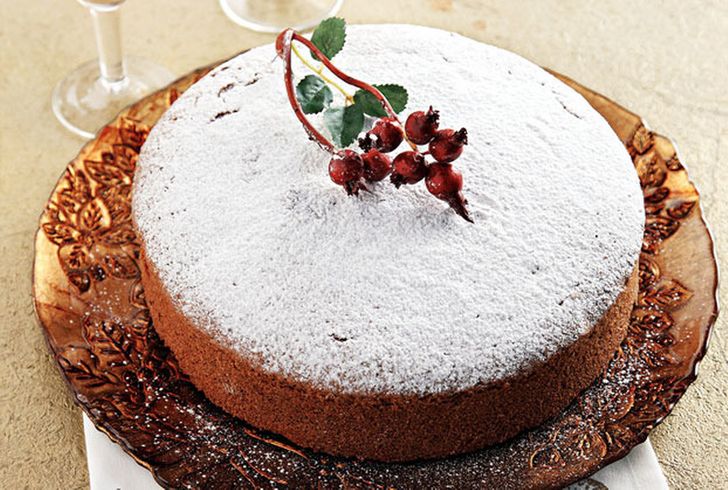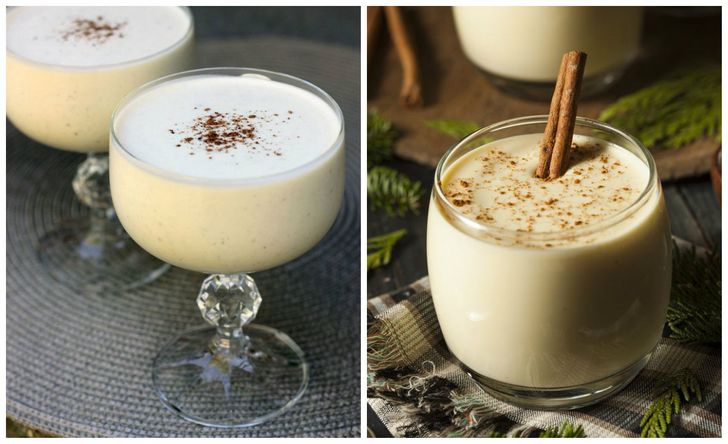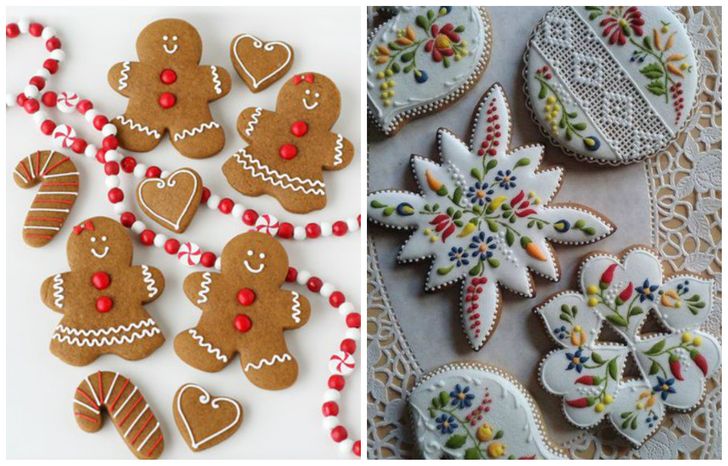All over the world, people make celebratory meals for Christmas and New Year’s Day that are generally considered to be the best and most delicious in their national culinary tradition. Their reputation has often been proved over generations, with each and every one of them falling in love with their own particular delicacies.
Bright Side has compiled the ultimate selection of mouth-watering dishes which appear on dining tables in different countries all around the world on this most joyous and magical holiday. They’re all easy to cook, and the ingredients can be easily found in stores. So what are you waiting for? Time to start cooking!
Juicy turkey with cranberry sauce from the UK
Turkey is the queen of the Christmas table in the UK. From there, the custom of eating one on the 25th has spread to the greater part of Europe and America. We offer the classic recipe — it has nothing extra in it, allowing you to relish the delicious and juicy meat above all.
- Rinse the turkey and then pat it dry with paper towels. Bend the tail and rub the inside cavity with salt and pepper. Place the herbs inside (if you have dried ones — don’t spare them when rubbing the meat), cut the onion and lemon into quarters. Put aside one quarter of each.
- Push the tail inside so that the juice doesn’t evaporate through it when roasting. Сlose the hole in the stomach as much as possible by securing the skin with toothpicks (or you can sew it). Tie the legs together with string.
- Pull up the neck skin a little and push the remaining onion and lemon quarters into the throat. Cover the hole with skin.
- Rub the turkey with salt, pepper and spices and brush the whole body with oil (you can be careful with the salt and it will be still delicious). Place with breast side down on a rack in a shallow roasting pan. Tuck the wing tips towards the back to avoid them burning during the roasting process.
- Put the turkey in an oven preheated to 390°F (200°C). An hour later, reduce the heat to 300°F (150°C). At this stage, you can cover it with foil, if you wish. But don’t forget to remove the foil half an hour before it’s ready to get that golden-brown colour. After another hour, remove the turkey from the oven, turn it breast side up, place it back in the oven and roast until it’s ready.
- How should you calculate the time it needs to cook? It takes about an hour for every four pounds (two kilos) of weight, that means that 13-pound (6-kilo) bird will be ready in about three hours.
- And the last stage — after taking the turkey out of the oven, don’t rush to serve it. Cover the turkey with foil and leave it for half an hour. This way it will be juicier and tastier.
For the cranberry sauce you will need:
- 7 oz (200 g) cranberries
- 2 red onions
- 1 apple
- 3 garlic cloves
- 1-inch (3 cm) ginger root
- 3 tablespoons of vegetable oil
- Sugar and salt according to taste
- 1/2 cup of cold water
- Peel the apple and remove the core. Cut into cubes. Cut the onion into wedges, and the garlic into thin stripes. Mince the ginger.
- Heat some vegetable oil in a sauté pan. Add the onion and fry; add the garlic, ginger and apple. Cook for another five minutes.
- Add the cranberries, and pour in the water. Bring the sauce to the boil over a high heat and stir for about ten minutes until the mixture is thickened.
- Season with sugar and salt according to taste. Allow to cool before serving.
Aromatic apple-stuffed goose from Germany
If it’s turkey in the UK, then in Germany, the true king of the festive table is a fragrant apple-stuffed goose.
- 6.5 to 9 pounds (3.5 to 4 kilos) goose
- 1 onion
- 2-3 aromatic apples
- 1 teaspoon of cumin
- Salt and ground pepper according to taste
- 1 shot of strong alcohol (brandy, rum, cognac)
- 2 tablespoons of flour
- It’s better to soak the goose in heavy salted water overnight — it will be softer this way. Cut away the excess fat from the body (neck and tail), cut off the wing tips and remove the giblets. Rinse and pat dry.
- For the stuffing, chop the onions and apples into large pieces, add the cumin and mix thoroughly.
- Rub the whole body with salt and ground pepper (you don’t need salt if you already soaked the goose). Using toothpicks or skewers, cover over the throat with skin. Stuff the goose and sew up the hole. Tie the legs together with string.
- Prick the skin using skewers or another sharp object so that the fat melts better. Place the apple-stuffed goose breast side down in a preheated oven at 350°F (180°C) and roast for 50-70 minutes.
- Once the specified time has passed, carefully turn over the body and roast for the same amount of time, sprinkling the goose with drips of the juice that has run out from time to time. Then cook until it’s ready (when you puncture the meat, the juice should be transparent), the cooking time depends on the oven and the size of the bird.
- While the goose is in the oven, you can make the sauce. Start with the broth. Place the chopped wings, giblets, fat, spices in a pan and fry with carrot and onion. Fill it with water, bring to a boil and cook for ten minutes.
- Mix together about 10 tablespoons of goose fat which dripped off during roasting, with two tablespoons of flour. Place on the heat, add a shot of alcohol, salt and a couple of ladles of goose broth. Stirring regularly, cook until the sauce thickens.
- Once the goose is ready, leave it to cool for 10-15 minutes, having covered it with foil to make it juicier. Serve with sauce, stuffing can be used as a side.
Roasted ham is the main dish on the Christmas table in many Scandinavian countries.
- 11 to 17 pounds (5 to 8 kilos) of cured ham
- 2-4 tablespoons of mustard
- 2-4 tablespoons of brown sugar
- 2-4 tablespoons of bread crumbs
- Cloves for decoration
- Place the ham fat side up on a rack in a shallow roasting pan. Put in the oven and roast for about 40-45 minutes at 300°F (150°C).
- Remove from the oven and leave it to stand. Remove the skin and subcutaneous fat, as much as you see fit.
- Mix together the ingredients for coating and rub them over the ham. Put it back in the oven at 435°F (225°C) for ten minutes, or until the whole ham turns a golden-brown colour. Decorate the surface of the ham with cloves.
- Many believe that the ham tastes even more delicious if cooked in dough. The dough not only allows the juice to evaporate, but also absorbs the extra salt.
- Mix together 2 pounds (800 grams) of rye flour with water to make a soft dough. Then roll it out until it’s 1/5 inch (1/2 cm) thick, and cover the surface of the ham with it. Do not add salt into the dough. If the ham is too salty, the dough layer will absorb the excess salt.
- Gravy can be used to make a delicious sauce (NB: if you are make a salty ham, the broth will already be very salty). A trusted method is to add a little apple essence, ginger and mustard into the broth and serve with the ham.
The Danish prefer to roast not cured, but fresh pork at Christmas. The first option is, of course, easier, but the second is healthier.
- 4 pounds (2 kilos) gammon
- 1 carrot
- 1 onion
- 1.8 oz (50 g) ginger
- 8 tablespoons of lime (lemon) juice
- 2 tablespoons of brown sugar (honey)
- 30 pieces of clove
- 1 lemon
- Peel and chop the carrot, onion and ginger. Place the gammon in a large saucepan, cover with water, add the chopped onion, carrot, ginger and six tablespoons of lime juice. Bring to the boil, reduce the heat, cover and cook for 2.5 hours until the meat is tender. Remove from the heat and allow it to cool in the broth a little.
- Preheat the oven to 430°F (220°C). Remove the gammon from the broth, place on a rack in a shallow roasting pan and gently remove the skin without damaging the fat layer. Using a knife, make cuts in the top layer of fat in the form of diamonds, and stick cloves between the cuts. Cut the lemon into four long pieces and add to the meat in the pan.
- Mix together some brown sugar, honey and the remaining lime juice, and cover the entire surface of the gammon with this mixture. Roast in the oven for 20 minutes until the surface of the gammon is glazed.
Green bean casserole from the USA
Bean and mushroom casserole is a tasty, healthy and, most importantly, an easy-to-make meal. It’s difficult to imagine the Christmas holidays in the US without this dish.
- 3 tablespoons of olive oil
- 7 oz (200 g) green beans
- 10.5 oz (300 g) fresh mushrooms
- 1 onion (and another one for deep-frying, if desired)
- 1 bundle of green onions
- 1/2 bundle of parsley
- 4 eggs
- 5 oz (150 ml) cream
- 2.5 oz (70 g) cheese
- Salt according to taste
- 1/2 teaspoon of dried herbs
- Boil the green beans in salted water until soft for about seven minutes. Chop the onion and the white part of the green onions and fry in olive oil. Wash the mushrooms, chop and add them to the onions. Fry until most of the liquid boils away. Place the beans in a strainer and pour cold water over them.
- Add the beans to the onions and mushrooms, stir and simmer on a low heat for five to seven minutes.
- In a bowl, whisk the eggs, add the cream, salt, spices, chopped herbs and grated cheese. Mix thoroughly.
- Place the beans with onions and mushrooms in a large baking pan or several smaller ones, then evenly cover the egg-cream mixture. Bake in the oven at 350°F (180°C) until it turns a golden-brown colour.
- Americans often sprinkle the casserole with deep-fried, crispy onions as shown in the photo. But this isn’t obligatory. If you still want to do properly, then cut the onion into half-rings and drop them into hot oil. Fry until the onions turn a golden colour, then remove with a perforated spoon and decorate the casserole.
Delicious potato salad from the Czech Republic
Potato salad is one of the most famous dishes made in the Czech Republic, and certainly, no Christmas feast passes by without this meal. It can be served as an individual dish, or as a side to another Christmas Czech dish — fried carp.
- 4.5 pounds (2 kilos) of potatoes
- 2 carrots
- 1/2 celery root
- 1 parsley root
- 1 onion
- 2-3 pickled cucumbers
- 2 eggs
- 3.5 oz (100 g) yoghurt without sugar (or sour cream)
- 3.5 oz (100 g) mayonnaise
- 2 sour-sweet apples
- 1 tablespoon of mustard
- Salt and pepper according to taste
- Boil all the root vegetables, without allowing them to be overcooked. Allow them to cool.
- Cut everything into small cubes. Mix together the mayonnaise and yoghurt (or sour cream) in a ratio of 1:1, and add a tablespoon of mild mustard dressing. Season with salt and pepper to your taste, and for the finale add grated apple.
Kulebyaka pie from Russia
At Christmas, Russians retain a custom of making various pies. One of these is Kulebyaka pie, which is worth every minute you spend on it.
- 1 pound (400 g) wheat flour
- 1 cup of milk
- 3.5 oz (100 g) margarine
- 2 teaspoon of instant yeast
- 2 eggs
- 1 tablespoon of sugar
- 2 onions
- 1 pound (400 g) fish fillet
- 3.5 oz (100 g) rice
- 1 bundle of parsley
- Warm up the milk slightly, dissolve the sugar and yeast in it, add a few tablespoons of flour, mix well and put the leavened dough mixture in a warm place for about half an hour.
- Sift the remaining flour, add the softened margarine and eggs (leaving one yolk for greasing the pie) and the prepared leavened dough, then knead the dough and put it in a warm place again.
- Boil or parboil the fish and add in the spices and salt, then cut into small pieces.
- Boil the rice in the fish broth. Cut the onions into half-rings and fry them in vegetable oil. Wash the parsley, dry with a paper towel and finely chop. Line a baking pan with parchment.
- Roll out the dough into a large sheet, gently shift it on to the baking tray. Lay out some rice in the middle of the pie, then a layer of onions, then parsley, put the fish on top, add a couple of spoonfuls of broth.
- Pull together the edges of the dough, fixing it together with a tight seam. Glaze the pie with egg yolk slightly diluted with water. Make a decorative pie crust if desired. Let it stand for a while. Bake in a well-heated oven.
Banitsa with cheese from Bulgaria
Banitsa is a famous pie that is baked for Christmas in Bulgaria. It may have a variety of fillings — meat, spinach, or even fruit. But the most popular one is probably with cheese. Banitsa is made from phyllo dough, and it’s not difficult at all to make it. But if you don’t have much time, you can take ready-made yeast-free puff pastry and it will still be marvellous.
- 10-14 oz (300-400 g) flour
- 1 egg
- 1/2 tablespoon of vegetable oil
- 1 teaspoon of vinegar
- 1/2 teaspoon of salt
- Water
- (Or instead all of these ingredients) a packet of ready-made puff pastry
- 8.8 oz (250 g) Bulgarian feta cheese
- 4 leeks
- A pinch of paprika
- 3 eggs
- 3.5 oz (100 g) sour cream (or fresh curdled milk)
- Pour the flour into a deep bowl, make a hole in it, add a beaten egg with a small amount of water, four tablespoons of vegetable oil, and the vinegar and salt.
- Knead the dough until it’s not too soft and not too hard, gradually pouring on the water. Place it on a flour-covered table and knead for another ten minutes. Leave it in a warm place for an hour.
- Make the filling. Break up the cheese in a food processor, and fry the onion until it turns a golden-brown colour. Whisk the eggs until they turn into foam, add the sour cream (or fresh curdled milk), and mix everything together to make the filling. Add the paprika.
- Make some dough balls and then roll them into thin, flat cakes. (If you use ready-made dough, you should thaw it and roll out each sheet separately). Lay on the filling, roll the dough into tubes and then form each one into a snail shape. Place them on a baking tray.
- Bake in a well-heated oven until they turns a golden-brown colour — this will take 30-40 minutes at 390°F (200°C). Then remove from the heat, sprinkle with water, cover with a towel and allow to stand for half an hour.
Christmas Yule Log from France
Christmas Yule Log is a cake, and it’s impossible to imagine Christmas in France without this one. The classic recipe has a chestnut filling. If you want to get closer to France, we strongly recommend you try it, and it’s easy enough to find the chestnuts in the shops. But if you don’t want to mess around for a long time, you can make an alternative cream from your favourite (non-liquid) filling.
- 5 eggs
- 1/4 cup of sugar
- 1 teaspoon of vanilla sugar
- 1 cup of flour
- 2 tablespoons of butter (and a bit more for glazing)
- 2 cups of raw chestnuts
- 1 tablespoon of honey
- 2/3 cup of milk
- 2 egg yolks
- 4 tablespoons of sugar
- 1 teaspoon of vanilla sugar
- 1 teaspoon of potato starch
- 1 tablespoon of dark rum
- 1 cup of 33% cream
- cocoa powder, frosting sugar, white and dark chocolate, hazelnuts or almonds for garnishing
- Make cross-shaped slight cuts on the side of the chestnuts. Cover them with cold water, bring to the boil, simmer for 20 minutes until soft. Drain the water, leave to cool, then peel and grate with a metal sieve. Mix the resulting puree with honey.
- In a saucepan with a thick bottom, mix together the milk and starch, add the egg yolks, and both the regular and vanilla sugar. Place on a low heat and cook, constantly whisking until the mixture becomes thick. Remove from heat, add the chestnut puree with honey and rum, and stir until smooth. Place in the fridge for two hours.
- Using mixer, whisk chilled cream into a solid foam. Gradually, add the cream into the cooled mixture, stirring downwards. Place the filling in the fridge for another two hours.
- For the cake: in a deep heat-resistant bowl, mix together the eggs and the regular and vanilla sugar. Set the bowl in a water bath over a saucepan of slightly boiling water and whisk with a mixer until the mixture becomes warm. Remove the bowl from the saucepan and continue beating until the mixture has cooled and doubled in size. Add the flour and mix gently, then add the chilled melted butter.
- Line a rectangular baking pan or baking sheet with parchment paper greased with butter, pour in the cake mixture. Place it in an oven preheated to 350-375°F (180-190°C) and bake for five to seven minutes.
- Remove the baking pan from the oven and immediately turn the sponge cake onto a rack. After five minutes, carefully roll up the sponge cake without removing the parchment and leave it like this for five to ten minutes. Then roll out. This will allow you to roll up the cake when it’s cool without breaking it.
- Pour out a cup of the filling over the cake, flatten with a spatula and roll it up, gradually removing the parchment. Tightly wrap the roll in kitchen foil and place in the fridge for an hour.
- There are several way of decorating this cake. You can cover the roll with the remaining cream and put hazelnuts on top (as in the photo), or sprinkle with almonds. Or you can make it look like a real “log“. To do this, cut the edge of the roll into one-inch (two cm) thick slices and attach them on top with filling to look like the ”knots" of the log. Cover the entire roll on top with the remaining filling, leaving only the edge cuts and the tips of the “knots” uncovered. Apply a wavy pattern with a fork, and sprinkle with cocoa and frosting sugar.
Vasilopita cake with almonds and orange juice from Greece
Vasilopita is served on New Year’s Eve in every Greek home. People cut it immediately after the clock strikes midnight, then they offer each other good wishes. This easy-to-make cake is fluffy and delicious, and it smells wonderful. According to tradition, the cake is always baked with a coin inside, and the person who gets the slice with the coin will be happy throughout the year.
- 1/2 pound (250 g) butter
- 4 eggs
- 10.6 oz (300 g) sugar
- 3.5 oz (100 g) almonds
- 1/2 cup of orange juice (roughly, the juice of one large orange)
- 1 teaspoon of orange zest
- A sprinkle of vanilla
- 1 teaspoon of cinnamon
- 1/2 cup of milk
- 1 pound (400 g) of flour
- 1.5 teaspoon of baking powder
- 2 tablespoons of frosting sugar
- Whisk the softened butter with sugar until it takes on a creamy texture. Add the eggs (one at a time) and beat until smooth. Add the freshly squeezed orange juice and milk while whisking.
- Add the vanilla, orange zest and cinnamon, then — the flour and baking powder. Add the crushed almonds into the ready-made dough and mix thoroughly.
- Bake in a baking pan greased with butter at 350-375°F (180-190°C) for 40-50 minutes. Check if it’s ready with a toothpick. If the cake isn’t ready yet, but the top is brown enough, cover the pan with baking paper.
- Leave the ready-made cake to cool and sprinkle with frosting sugar.
Spicy and thick eggnog from the USA and Canada
The main drink of the holiday season in the US and Canada is eggnog. It’s a thick mixture of eggs and whipped cream with added spices. Eggnog is so popular that Americans and Canadians use it in as many ways as they can — they add it to coffee and even make cakes and desserts with eggnog flavour. It’s better to make this drink overnight.
- 6 egg yolks
- 0.9 cup of sugar
- 1.5 cups of rum or brandy
- 2 cups of milk
- 2 cups of 30% cream
- 2 pieces of clove
- Cinnamon and nutmeg according to taste
- 4 teaspoons of vanilla essence
- In a saucepan, mix together the milk, cinnamon, cloves and vanilla essence (1/4 teaspoon). Place on a low heat and remove just before it starts to boil.
- In a separate bowl, mix together the egg yolks and the sugar, whisking briskly until you get a fluffy foam. Gradually pour the milk into the egg mixture, keep whisking without stopping.
- Pour the mixture into the saucepan and place on a medium heat. Warm without boiling and whisk continuously until the mixture takes on a creamy texture. Remove the cloves from the mixture, pour into a large jug and chill in the fridge for 2 hours.
- Later, while mixing thoroughly, add the cream, remaining vanilla essence, nutmeg and white rum. Keep the eggnog in the fridge overnight. To prevent the alcohol from evaporating, cover tightly with cling film or a lid.
- Pour into cups and sprinkle with cinnamon or cocoa powder before serving.
Gingerbread cookies from the United Kingdom
Gingerbread cookies are popular throughout Europe as a symbol of Christmas and New Year celebrations. But it’s believed that they were baked for the very first time in England.
- 3 tablespoons of honey
- 2 tablespoons of sugar
- 2 teaspoons of cinnamon and ginger
- A pinch of ground nutmeg and coriander
- 1 teaspoon of baking soda
- 2.5 oz (70 g) butter
- 1 egg
- 1.5 cups of flour
- 6.3 oz (180 g) frosting sugar
- 1 egg white
- Mix together the honey, sugar and all the spices in a saucepan. Allow to simmer, stirring from time to time, until it melts and starts bubbling.
- After boiling, add the soda to make the mixture rise, then add the butter and stir until it dissolves. Remove from the heat and leave it to cool.
- Add the egg and mix it in well. Pour in the flour and knead the dough. Leave it for 10-15 minutes.
- Roll out the dough, cut the figures out and place them on a baking sheet lined with parchment paper. Bake cookies for 10-13 minutes at 350-375°F (180-190°C).
- Make the icing. You need to mix together the frosting sugar and the egg white in a deep plate, then whisk them using mixer until the mixture becomes soft and has a fluffy texture. Pour the mixture into an icing bag or a regular plastic bag, then decorate the ready-made cookies. If you’re worried the egg might not be ready to eat, you can put the cookies back in the heated oven for a few minutes.

